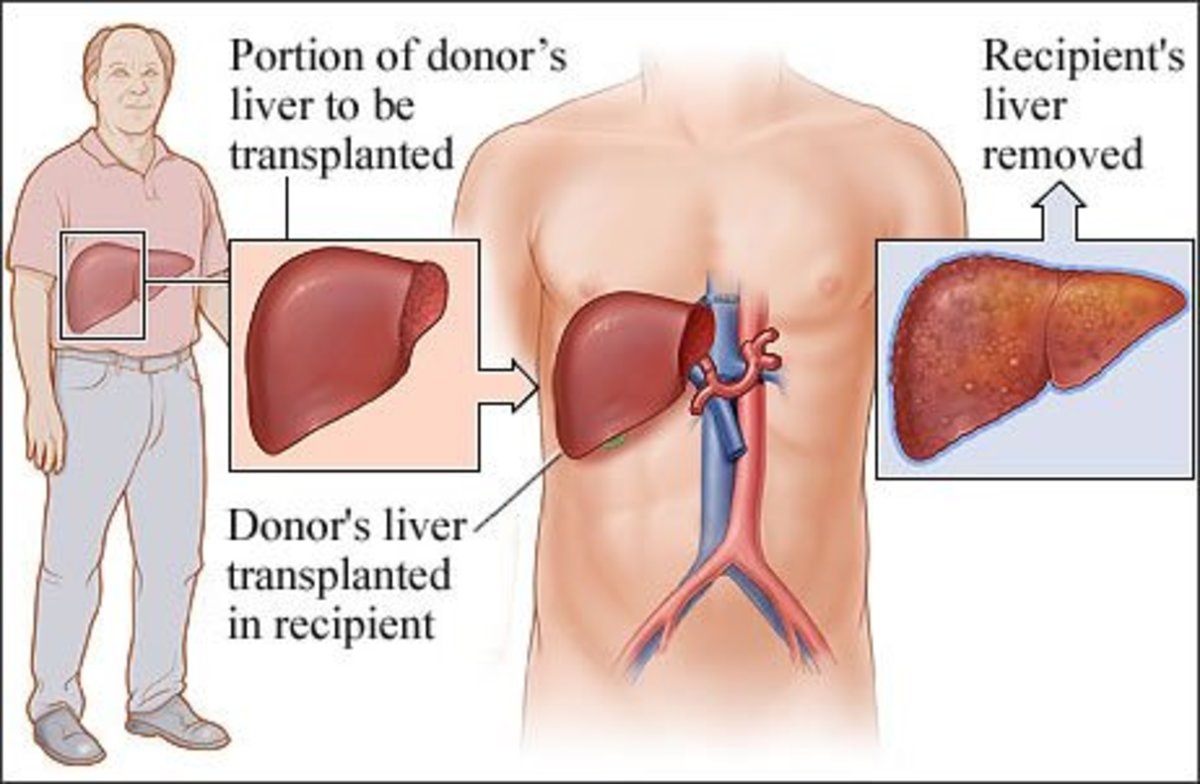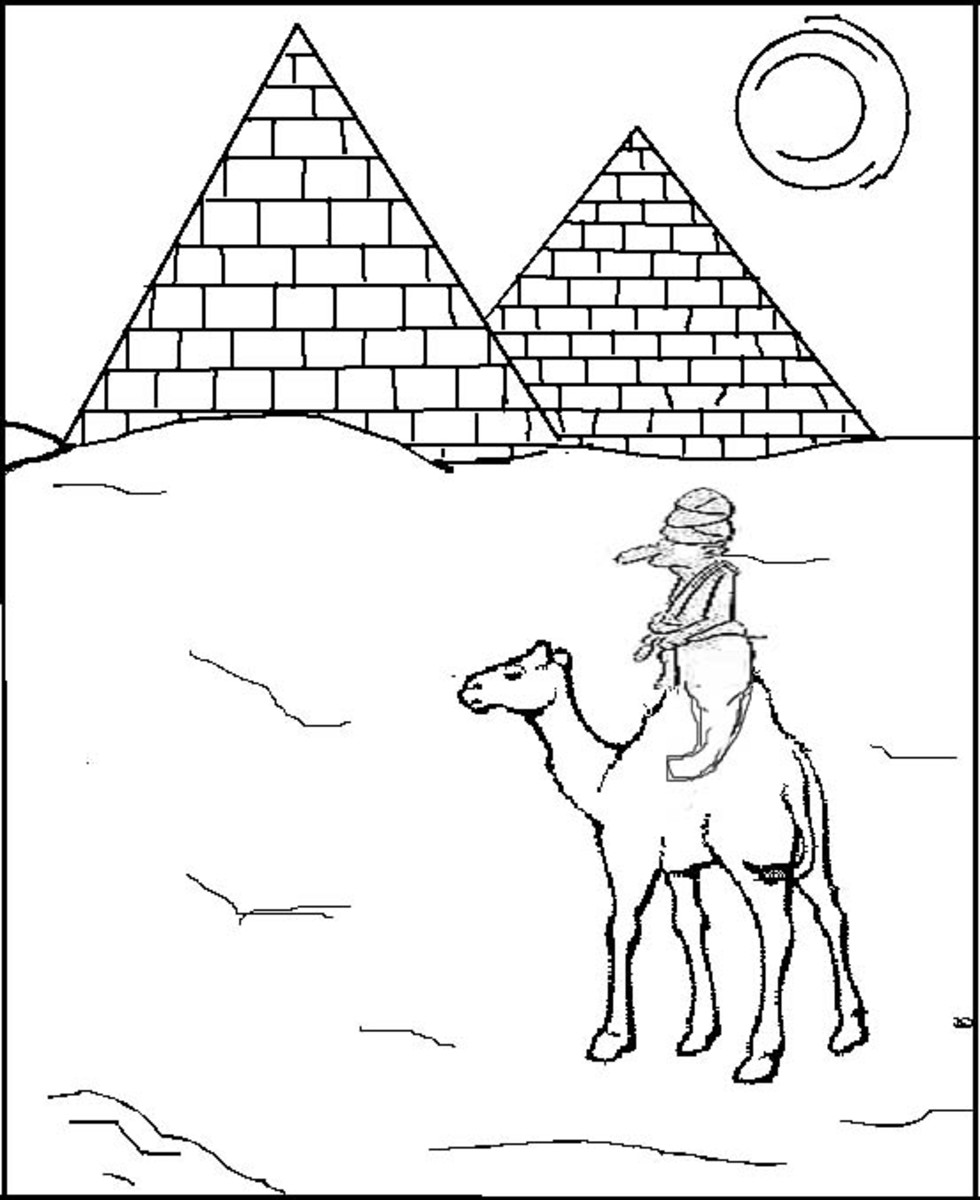Gait Training - An Introduction #1
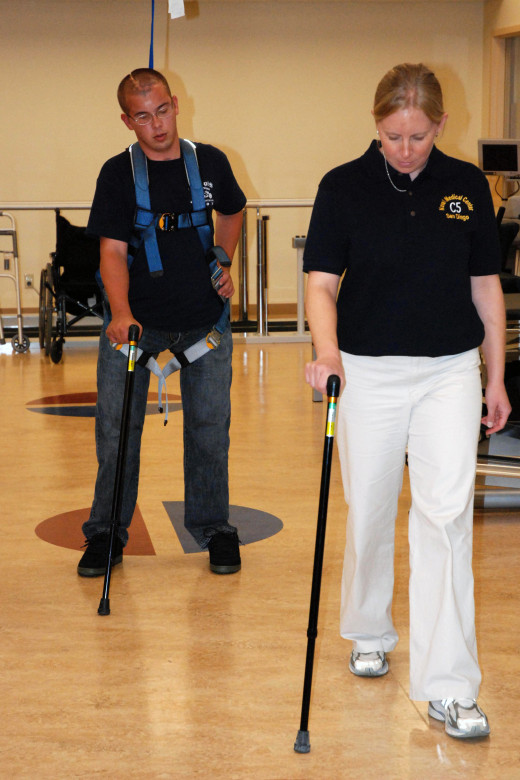
Introduction
Gait is that part of locomotion used by animals with limbs. The human gait is the way the people walks with balance, without falling down. The human gait pattern is designed in such a way that he can maintain his upright posture while in locomotion. As for as an adult human being is concerned, a good and proper gait with good balance is essential to carry out the normal activities of daily living, especially walking. A person who is devoid of proper and normal gait with defective balance needs thorough gait training with perfect balancing. In the context of gait training, balancing refers to the ability of the body to quickly respond and adjust without falling in a situation when he comes across uneven or slippery or terrain surfaces while walking. Visual, audio and proprioceptive systems will also contribute for the maintenance of proper gait.
Gait Training
Gait training is an integral part of Physical Therapy which deals with correcting or improving a disabled person’s inability to stand and walk with proper balance and without falling. The main aim of gait training is to teach the patient how to move around in a safe way without falling. A disabled person may be reluctant to walk or may walk around in an improper and faulty way with very minimal mechanical advantage. Improper gait may expose the patient to improper posture and may also lead to various orthopaedic problems like ‘wear and tear’ of joints. Deformities may also occur. Usually gait training is attempted without any adaptive devices. But sometimes the adaptive devices are essential to carry out the gait training in the proper way
The patients who are in need of gait training are usually those suffering from spinal cord injuries, hemiplegic patients, patients having cerebellar lesions, patients having fractures in lower limbs, amputees, patients who had joint replacement surgeries etc. While gait training is given, the condition of the patient must be taken into consideration. The physiotherapist must evaluate and assess the patient before resorting to gait training. The patients who are bed ridden for long periods due to various diseases also need gait training. Gait training is very important for Cerebral Palsy patients.
Gait Training helps:
1. To move around safely without falling and with maximum mechanical advantage.
2. To correct and maintain proper posture.
3. To maintain balance while walking on uneven, slippery and terrain surfaces.
4. To strengthen the muscles.
5. To improve and maintain the normal range of motion of joints.
6. To improve standing balance.
7. To improve proprioceptive sensation.
8. To build up endurance.
9. To maintain correct posture while walking around.
10. To avoid unusual wear and tear of joints leading to deformities that may lead to disabilities.
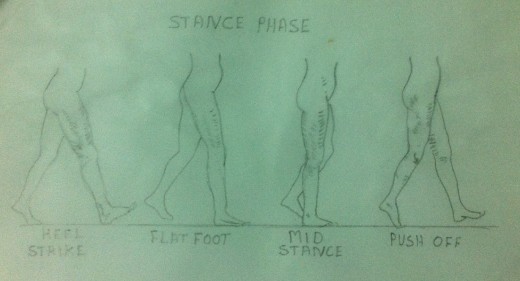
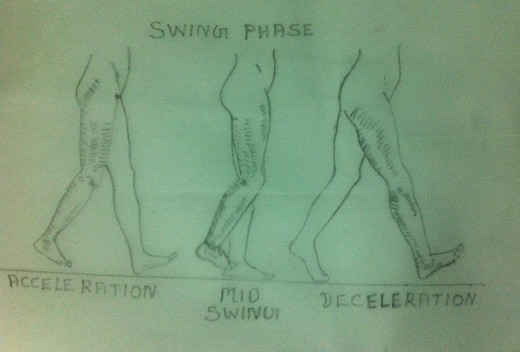
Components of Normal Gait:
The lower limbs are specially designed to the vital tasks of weight bearing and ambulation. Hence normal lower limbs are essential for a person to have a normal and efficient gait to carry out normal activities of daily living with maximum mechanical advantage. Any pathology that affects the lower limbs will definitely affect the gait of a person.
The normal walking cycle has two phases namely;-
- The Stance Phase- When the foot is on the ground.
- The Swing Phase-When the foot is off the ground and moving forward.
60% of the normal walking cycle is spent on Stance Phase and 40% in Swing Phase.
Each phase, in turn, is divided into smaller components.
The components of the Stance Phase are –
- Heel Strike.
- Foot Flat
- Mid Stance
- Foot Off
The components of Swing Phase are –
- Acceleration
- Mid Swing
- Deceleration
The most of the problems during gait become apparent in the Stance Phase. This is because Stance Phase is the weight bearing component of the gait.
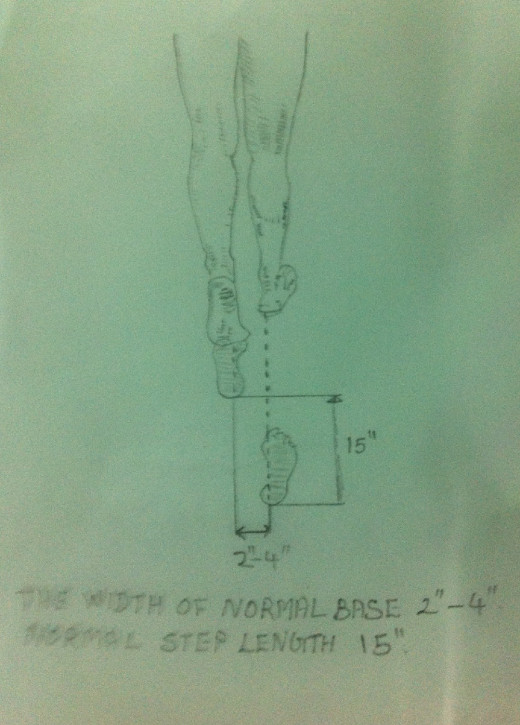
Characteristics of Normal Gait
1. In the case of normal gait, the width of the base should not be more than 2-4 inches from heel to heel. If the patient walks with a wider base, pathology may be suspected in the lower limbs. The patient usually walks with a wide base if he feels dizzy or unsteady. The unsteadiness of the gait may be due to various reasons. The unsteadiness may be due to cerebellar problems, spasticity of the lower limbs due to certain upper motor neuron lesions or due to sensory impairment in the feet.
2. The body’s centre of gravity lies 2 inches in front of the 2nd sacral vertebra. In normal gait the centre of gravity oscillates no more than 2 inches in a vertical direction. This phenomenon of controlled vertical oscillation maintains the smooth pattern of gait as the body moves forward. An increase in the vertical oscillation indicates the presence of pathology in the lower limb.
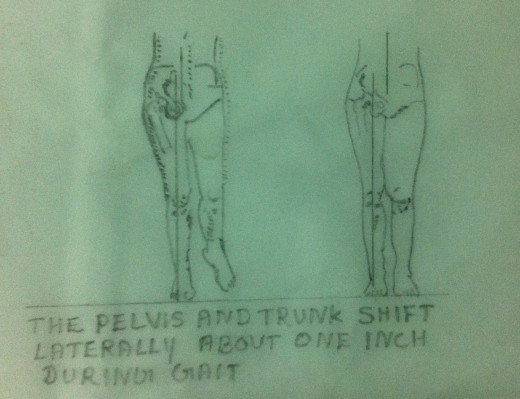
3. The pelvis and the trunk shift laterally approximately an inch to the weight bearing side during normal gait to keep the weight over the hip. If the patient has gluteus medius weakness the lateral shift of the trunk and the pelvis is moderately accentuated.
4. The average length of a step is approximately 15 inches. With pain, advancing age, fatigue or any pathology in the lower limbs the length of the step may be decreased.
5. An average adult walks at a rate of approximately 90-120 steps per minute. With pain, advancing age, fatigue or any pathology in the lower limbs the number of steps per minute is decreased. If the surface on which the patient is walking is uneven, slippery, or rough the step is usually unsure. Hence in such cases the steps per minute comes down.
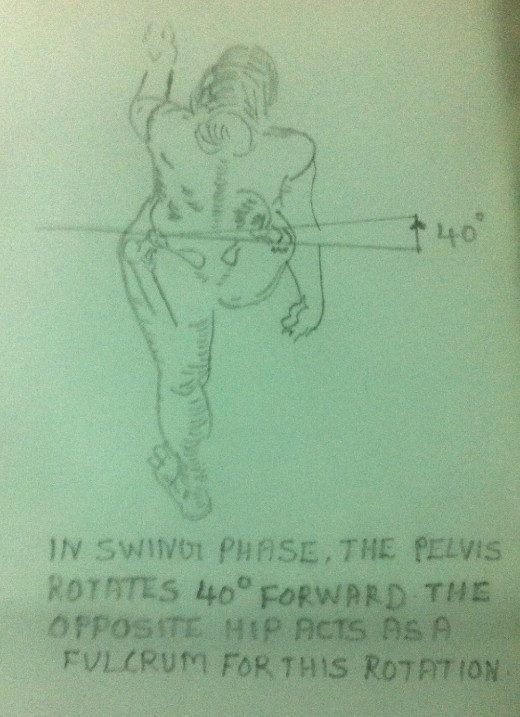
6. During Swing Phase the pelvis rotates 40 degrees forward, while the hip joint on the opposite side acts as the fulcrum for this rotation. The patient usually does not rotate normally around a hip that is painful.

